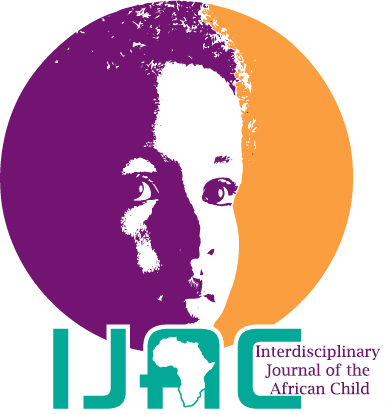IJAC: GUIDELINES FOR AUTHORS IN SUBMITTING PAPERS
Interdisciplinary Journal Of The African Child accepts empirical research articles completed to a high standard and relevant to psychological practice. Submissions should be between 5000 and 8000 words including references, tables, and figures. Manuscripts should follow the style of the American Psychological Association’s publication guidelines. Submissions are accepted in electronic word-processing file formats and specifically Microsoft word. Please scan your files for viruses with updated antivirus software before submission.
Manuscripts are accepted on the understanding that they are original and not under simultaneous consideration by any other publisher. Publication is entirely at the discretion of the editors, and all manuscripts are subject to expert refereeing on an anonymous basis (blind review). The decision of the editorial board is final. Articles accepted for publication will be copyrighted. Authors should not submit their work to other journals at the same time.
1. Title –The title should be concise, informative and meaningful to the whole readership of the journal. Please list all authors that played a significant role in the research and provide full affiliation information (full institutional address, and e-mail address) and indicate who is/are the corresponding author(s).
2. Abstract – The abstract is a summary (usually 300 words or fewer) that provides the reader with a framework of what the paper contains. In an executive form, indicate the background, problem, objectives, sample size, methods and instruments used, results, significance of results and the impact of this work to the general field of psychology.
Authors should supply up to eight relevant keywords that describe the subject of their article. These will improve the visibility of your article.
3. Introduction and Background – This should be concise and describe the nature of the problem under investigation and its background. It should also set the work in the context of previous research, citing relevant references. This is a short review of the literature relevant to the research topic. It starts with one or two paragraphs introducing to the reader the general field of study. It always helps to briefly begin with broad topics. The subsequent paragraphs describe how the area of study contributes to the improvement of overall field of psychology, explaining what question was answered by the present study. Finally, the summary is given in a sentence showing how the answer to the question will contribute to the overall field of study.
4. Methods – This section explains how the study was conducted. It gives a description of the design and methods used in the study; the study’s participants; the instruments used in the study; and briefly and concisely explains each key procedures and techniques used in the study. This is followed by the statistical analysis methods utilized to analyze the results.
This section should be detailed enough for another researcher to be able to replicate the study without consulting the author. APA Manual has specific guidelines on this.
5. Results – Results explain what the study found. In this section it is the responsibility of the author to provide the evidence that psychologists want to see i.e. data. In addition, for quasi experimental studies, key statistics such as the number of samples (n) and the index of central tendency (mean, median or mode) must be stated. Include any statistical analysis that was performed, and make sure to indicate specific statistical data, such as confidence level, p-values etc. Note that each relevant table and figure in the paper must be succinctly referred to in the results.
6. Discussions - In this section, the main responsibility is to synthesize the results and offer conclusions. The areas to respond to are: What do these results mean? How do these findings relate to the research discussed in the introduction? Are there any discrepancies in the findings to explain? What are the implications of the findings? How do they support or contradict established theories? What are the real global implications of the findings?
Note-The discussion can begin with a brief paragraph that gives an overview to the study. Then discuss the most important findings. Next, the most interesting, significant, remarkable findings presented in the results always remembering to contrast and link the findings with other studies reported in the literature review. It is always informative if a discussion of the potential weaknesses of the interpretation is also included. Finally, indicate the study contributes to the overall field of psychology.
7. Conclusions - Introduce the study and then briefly state the major results. Then state the major points of the discussion. Finally, end with a statement of how this work contributes to the overall field of psychology.
9. References - Include all references that have been cited in the text. Must follow APA Manual Guidelines.
10. Authorship and Originality – State occupation and qualifications starting with undergraduate to the highest degree earned.
The Journal requires the assignment of copyright to Daystar University on acceptance of the paper for publication. Authors must obtain any necessary permissions for extensive quotations, tables, illustrations, or any other copyrighted material before a paper can be entered into the publication queue. |


